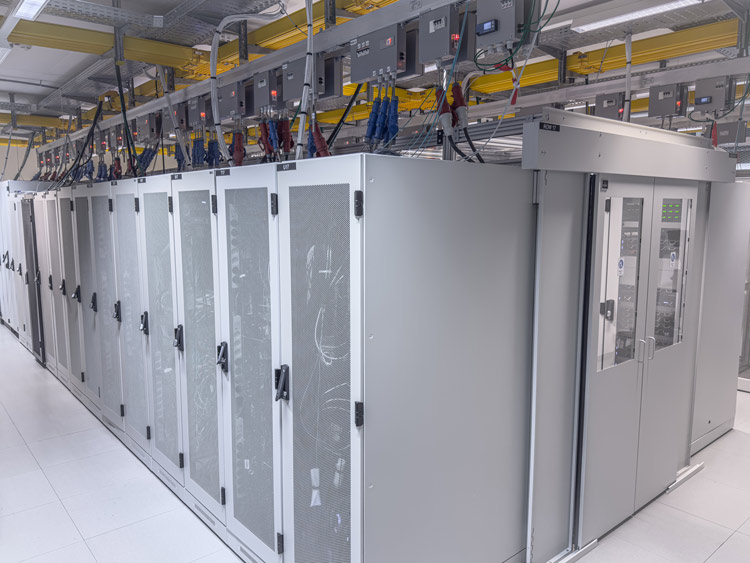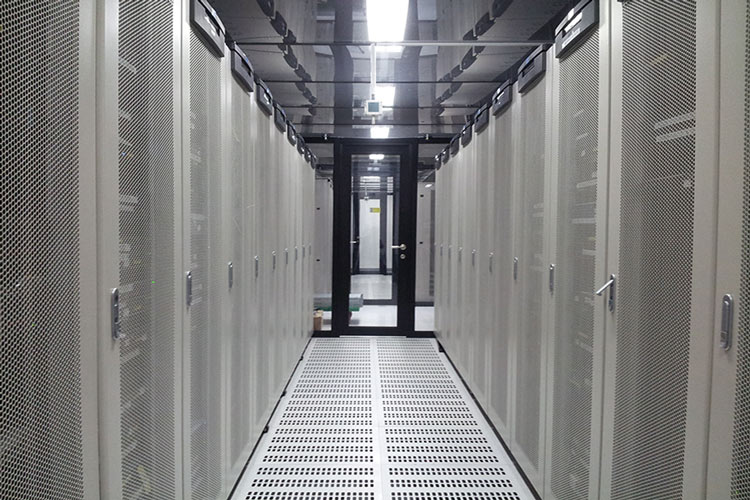Data centers are frequently called the backbones of our increasingly digitalized world, and they truly are crucial in ensuring uptime for countless businesses and applications. Demand for bandwidth keeps growing with new technologies picking up speed, and data centers rely heavily on their network infrastructure to ensure availability in a continuously changing environment. Even small periods of downtime can cause significant revenue loss for organizations, leading to reputational damage and a lengthy recovery. Under these circumstances, excellent data center uptime is no longer a negotiable extra but a marker of performance and reliability. Unsurprisingly, most organizations require a 99.99% data center uptime for their most important applications and hardware.
Network infrastructure plays a key role in securing data center uptime. According to the Uptime Institute’s Annual Outage Analysis for 2023, network connectivity-related issues were responsible for 31% of the outages of the past three years, outrunning even power-related issues.
Data center uptime plays a crucial role in facilitating the activity of organizations and businesses, and operators consistently focus on improving redundancy, compliance certifications, and overall efficiency.
This blog explores the challenges of delivering data center uptime and what operators need to pay attention to in order to achieve their performance and uptime goals. Let’s jump in.
The Challenges of Delivering Data Center Uptime
Because data centers, technology, and business are interdependent, priorities are inconstant, and always bend to what the demands of the current situation are. It’s no secret in the industry that meeting clients’ high expectations takes extensive effort on the data center’s part, especially considering the constant changes and adaptations new technologies require. Operators face waves and waves of new complexity to deal with and have to invest considerably into their network infrastructure in order to accommodate new requirements and ensure the best uptimes.
Common Causes of Data Center Downtime
Among the most common causes of data center downtime are system failures, which are frequent with old and unstable equipment and a lack of proper monitoring. Even if new, servers, networking equipment, and storage devices can fail for many reasons, like unexpected changes in temperature or humidity levels. Although identifying the factors leading to these failures can be challenging, regular maintenance and efficient monitoring can minimize glitches and crashes, reduce unplanned downtime, and secure availability.
Power outages caused by inevitable natural disasters and UPS failures have been at the top of the list of the main causes of downtime. However, there are other, more sneaky threats to data center uptime, like human error. Human error can cause issues at any level, be it hardware, network, or management-related. Misconfiguration and accidental deletion are some of the most frequent causes of incidents. These errors are slippery because operators can only partially plan or prevent them.
Successful cyberattacks are another great enemy of data center uptime. Data centers are constantly bombarded by DDoS attacks, ransomware, and all kinds of malicious actions, which can lead to compromised systems, data theft, and system failures.
Increasing Numbers of Network Infrastructure – Related Data Center Challenges
According to the 2023 report of the Uptime Institute (link in the introduction), network-infrastructure-related issues are becoming more frequent among data centers, with a growing percentage of cases. The most common elements causing networking and connectivity-related downtime are configuration/change management failure at 45% and outages due to third-party network provider failure at 39%. The complete list of the main causes of network-related outages provided by Uptime Institute’s report is as follows:
Configuration/change management failure 45%
Third-party network provider failure 39%
Hardware failure: 37%
Line breakage 27%
Firmware and software error 23%
Cyberattack 14%
Network/ congestion failure 12%
Weather-related incidents: 7%
Corrupted firewall/routing tables issues: 6%

What’s Behind the Recurrence of Network-Related Issues
Previously, when cabling equipment, routers, and switches didn’t require so much management, networking used to be a lot more straightforward and predictable. However, today’s software-defined, dynamically switched environments require a completely different approach. A lot of reconfiguration is happening, which inevitably leads to more opportunities for errors, which can eventually become the cause of failure. Errors can be hard to diagnose in time, and in many cases, by the time it is discovered, the domino effect of errors has already kicked off, making it even harder to stop.
Nevertheless, there’s a legitimate explanation for recurring network-related data center uptime issues, and it has to do with recent large-scale digital infrastructure shifts. Transitioning to hybrid architectures comes with a lot of related complexity, requiring a dynamic approach and constant vigilance to avoid errors.
Design Issues
Network infrastructure-related issues can go back all the way to the design. Different networking technologies can have different needs, and network engineers face the challenge of figuring out the most optimal arrangement and management in order to maximize performance. The large number of software-defined networking options available today also contributes to errors becoming more frequent since each one operates differently and has different requirements. It is a real challenge for network operators to handle all this complexity with confidence.
Network design tools make it possible to model the network before building it, allowing engineers and technicians a preview of what their configuration is going to look like. This allows for a strategic approach that can offer a degree of efficiency in ruling out possible errors and recognizing anomalies.
Multi-Vendor Environments and Configuration Issues
Networks are inherently complex, but the complexity becomes truly highlighted in the case of multicarrier colocation data centers. They are served by several telecommunications providers, which can cause issues because their connections often rely on the same cables and infrastructure. If something goes wrong with a link, it can mess up things for everyone involved.
Third-party-related networking issues are a frequent cause of outages, and since so many things are intertwined, they are very difficult to control. However, focusing on network redundancy and resiliency can contribute to averting these issues and securing data center uptime.
Also, relying solely on one company for network equipment and services is expensive and hardly efficient. A multi-vendor approach makes it easier to set up networks correctly, and minimizes misconfigurations and the resulting weaknesses like higher exposure to DDoS or ransomware attacks. It also makes network scaling and maintenance more efficient.
Cables as a Source of Failure
A frequently encountered issue influencing data center uptime is when optical transceiver and AOC cable manufacturers soften component specifications in order to push the costs lower. This can make a prime point of failure if problems are not discovered during testing. Network testers can identify these issues by checking things like interface connections, timing differences, power levels and usage, and temperature.
Intricate, high-fiber cable designs are often used when connecting between multiple patching racks and between data halls that can be spread across several separate locations. In this setup, cables adhering to structured cabling standards often terminate in multi-fiber connectors, where parallel fibers are used to handle high data rates. This setup, however, is prone to challenges of fiber polarity and constraints on loss and length because of the modulation methods used and the high data rates. For identifying issues like compromised connections, bends and breaks, optical fiber multimeters and optical time domain reflectometers can be used in these complex setups.
Data Center Interconnection Issues
Issues with increasingly complex data center interconnections can lead to downtime due to the intricacies involved in managing and troubleshooting these connections. As data centers scale, they rely on diverse technologies like coherent optics and dense wavelength-division multiplexing (DWDM), the risk of misconfigurations, compatibility issues and equipment failure increases. Troubleshooting complex setups often requires specialized knowledge and tools like different kinds of testers, especially when there are suspicions about optical fiber paths. The specialized expertise and tools are not always readily available, making them difficult to tackle.
A Prognosis is Better Than a Diagnosis
Designing and testing rigorously are no longer just options but vital for successfully preventing network-related outages and ensuring excellent data center uptime. With the world and our lives becoming more and more data-driven, the reliability of data centers will foreseeably continue to be the number one priority. Downtime is not an option anymore, and expectations for performance are high. Data center operators and network engineers have to take extensive measures focusing on redundancy and preventive maintenance to deliver 100% uptime and performance.
If you want to learn more and make sure your business doesn’t experience downtime, check out our solutions at Volico Data Centers. We offer top-tier, carrier-neutral solutions with excellent connectivity and the security of a redundant network infrastructure.
For more information, call (305) 735-8098 or chat with one of our specialists to learn the details.









